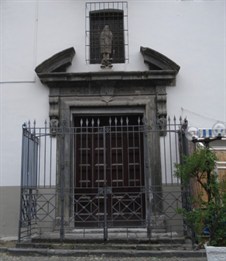Conservatorio di Sant’Onofrio a Porta Capuana

In 1578, Cardinal Alfonso Gesualdo of the Counts of Conca and of the princes of Venosa, uncle of the famous Carlo Gesualdo da Venosa, gave the order to form the Brotherhood of the Whites, made by the craftsmen of materials in Naples and composed by Genoese, Sicilian, Spanish, Florentine, Catalan and many other masters. The Brotherhood was attached to the Church of Sant’Onofrio a Porta Capuana, with humanitarian and religious purposes. Thus it was born a charitable institution for the reception of orphans and abandoned children, which were started from an early age to the craftsmenship. The institute was involved in the tragic revolt of Masaniello (1647-48), probably because of the kinship that united the little orphans to families who joined the desperate gesture. The institute was struck by the terrible viceroyal repression, experiencing years of great difficulty. There was the risk of closure because of the plague of 1656, which decimated the few children who survived after the revolt. Only in 1658 the Piarists, with their iron discipline, reorganized the orphanage that fully regained its enthusiasm. The uniform of the children was identical to that of the orphans of the Conservatorio di Santa Maria di Loreto, they had the white “skirt”, however the “cloak” and the hat were brown. Between the second half of the seventeenth century and early eighteenth century, through the severe work of its masters like Cristoforo Caresana, Angelo Durante (uncle of the famous Francesco Durante), Nicola Sabino, Nicola Fago and Gennaro Manna, the school grew significantly and, thanks to the high quality of teaching, the institute was soon brought to compete with the other three conservatories. Among the most distinguished musicians who tied their careers to Sant’Onofrio we remind also Niccolò Jommelli, Giovanni Paisiello and Giacomo Piccinni. In 1797, the Conservatorio di Sant’Onofrio incorporated the Conservatorio di Santa Maria di Loreto, and in 1806 all the institutions of Neapolitan music were incorporated into the Royal College of Music, which then will become the Conservatory of San Pietro a Majella.
